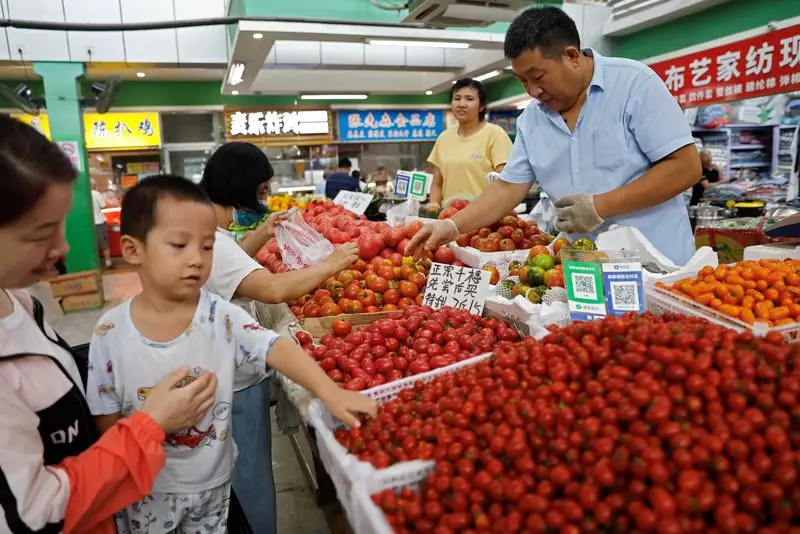Despite efforts to support feeble domestic demand and an uneven economic recovery, China’s consumer inflation held steady in May. The consumer price index (CPI) rose 0.3% from a year earlier, matching the previous month’s gain. However, it fell 0.1% from the month before, indicating a lack of substantial growth. This tepid inflation suggests that Beijing may need to implement additional measures to stimulate consumption and boost confidence among consumers.
Producer prices, which had been in deflation since September 2022, saw a slower decline in May compared to the previous month. The 1.4% contraction in May improved from a 2.5% decline in April, but still fell short of expectations. The rise in commodity prices, particularly copper, contributed to this improvement in producer prices. However, analysts remain cautious about the sustainability of this trend, especially given the challenges in China’s domestic demand.
The subdued performance of Asian shares and China’s blue chips following the inflation data reflects the lingering concerns about the country’s economic outlook. Despite the easing of COVID restrictions, China’s economy continues to face challenges, primarily stemming from the prolonged property sector crisis. The weak consumer confidence, coupled with the ripple effects on investor and business sentiment, has kept the economy from achieving a robust recovery.
Beijing has introduced various measures to stimulate demand, including incentives for the housing sector and subsidies for consumer goods. However, the latest data on core inflation, excluding food and energy prices, points to the fragility of domestic demand. Economists anticipate that more support measures will be necessary in the coming months to sustain economic growth and achieve the target GDP growth of “around” 5% for the year. A comprehensive policy approach that encompasses fiscal, monetary, and property sector measures may be crucial to boosting domestic demand effectively.
China’s inflation challenges highlight the underlying weaknesses in the country’s economy, particularly in terms of domestic demand and consumer confidence. The gradual improvement in producer prices and the steady consumer inflation underscore the need for sustained efforts to support economic recovery. Beijing’s focus on stimulating demand and fostering growth through targeted policies will be essential in navigating the challenges ahead. The uncertainty surrounding the future trajectory of inflation and the overall economic outlook underscores the importance of a proactive and comprehensive policy approach to ensure a sustainable rebound in China’s economy.

